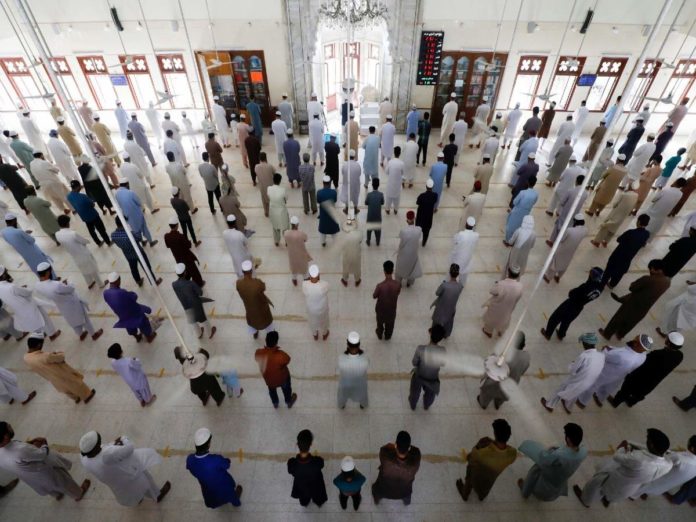Context
The Core versus Peripheral Islamic world theory is one of the key themes Politact has been following for over a decade. One of the premises of this construct is that the Core of the Islamic world represented mainly by the Arab Gulf states, including Iraq, Syria, and Jordan have been gradually losing influence. On the other hand, the peripheral Islamic world constituted by states like Turkey, Iran, Pakistan, Malaysia, and Indonesia, have been slowly gaining sway. This increase in influence is not necessarily in material respect, but has more to do with the relevance and connection to the causes dear to the Muslim street.
Another aspect of this theory is the interrelation of the Core and Peripheral states to the emerging and established powers. This is a key distinction since not even the oil rich Islamic states belong to what is commonly referred to as the emerging powers, such as Brazil, Russia, China, India and South Africa (BRICS). The Muslim states have had to coexist between the emerging and established powers and position their own existence with in this tussle.
It’s no secret that the western world has found itself increasingly challenged by the growing economic, military, and technological advancement of China. While Russia does not pose such an alarming threat, it is its strategic alliance with China that makes Russia more ominous on the world stage. On the other hand, India has aligned itself more with the West even while maintaining a close defense relationship with Russia.
Analysis
Who Benefits and Loses from the Pandemic?
Under the present circumstances, one of the key questions to contemplate on is how will the COVID-19 impact the Core versus Periphery theory and its interconnection with the emerging and established power relations. And related to this inquiry is who benefits and loses as the pandemic runs its course.
Obviously, one would think that the nations least impacted by the infectious disease are likely to benefit and come out on top. However, this is also related to where they stood on the totem pole before the crisis started. As would be expected, so far the coronavirus has not differentiated between the haves and have nots, but we are still at the early stages. Moreover, the virus is not fully understood yet and no vaccine is available to control it and to arrive at that stage will take time. The economic, health, and defense implications are still being evaluated before a sound determination can be made about who has benefited, if anyone.
However, there are some anomalies which may be due first to the staggered nature in which the virus has operated. Secondly, some nations are also controlling the information regarding its adverse consequences. For example, based on media reports it appears that South Asia, to include Pakistan and India, have not been as severely impacted as China, Italy, Iran, or the US.
How did the virus spread quickly from China to Iran and Europe, and onwards to the US, but has not replicated this character when it comes to India and Pakistan, where the nations were slow in implementing effective quarantining like the US. This has led some to conclude that some races may have a genetic immunity or advantage as compared to the others.
There are other unanswered questions and challenges:
1. When it comes to understanding the spread of coronavirus there is a consistent issue of the number of people tested for the infection and those that have recovered or died. In absence of complete testing it’s impossible to ascertain the true magnitude.
2. How was China able to control the spread of the virus and contain it but others are having considerable challenge? As China opens up its economy, will the virus spread increase again?
3. Does higher population density make the virus more deadly just because it can spread easily, which is one of the hallmarks of COVID-19?
4. Once one has had the infection and recovers, can they get the disease again or does that leads them to develop immunity.
5. Is there going to be a second wave of the pandemic as many medical experts are predicting?
These inquiries complicate the answer to who will benefit and who will loose, when all is said and done. There is however the secondary question of who can best cope with not only the virus itself, but the second and third degree consequences that are likely to emerge. Consider for example the crash in oil prices.

Arab Gulf States and COVID 19
Previous assessments on the dynamics of the Core versus Periphery theory have noted that US ties have slowly been deteriorating with the Islamic world, especially with the states of the periphery that include Pakistan, Iran and even the NATO member Turkey. And this has by default augmented American reliance on the oil rich Gulf states, with Saudi Arabia leading.
In the aftermath of 9/11, American ties to the Muslim world have revolved around seeking cooperation in the war against extremism and protection of Israel. While in the past it had dependent on the energy supplies from the region, this is no longer the case. From Afghanistan to Iraq and Syria, US involvement is either related to the fight against extremists or protecting Israel from regional threats, which puts Iran on the top of the list.
And for its cooperation, US has reciprocated by providing security assurances and equipment to the Gulf states. However, it has also expected these nations to take the lead in the fight against extremists, after all majority of the 9/11 attackers had come from Saudi Arabia. But UAE and Saudi Arabia have focused more in rivaling Iran in places like Yemen, Syria, and Lebanon, and in this they shared the interests of Israel.
In the South Asia theater, a different dynamics emerged. While traditionally UAE and Saudi Arabia had been close to Pakistan, as the economic clout of India grew, the Gulf states, minus Qatar, also began to tilt their positions in favor of India, especially on Kashmir. This transformation was similar to how their position changed on matters related to Palestine and the Middle East Peace Process.
The curtailment of oil demand associated with pandemic link shutdowns has put severe pressure on these energy rich Gulf states. According to Aljazeera TV, Saudi oil revenues have dropped as much as 24% since January, and the prospects are not likely to improve in the near future. Even before the impact of the virus had hit, the price of oil dropped considerably due to squabbling between Russia and Saudi Arabia, and the subsequent deal on production levels, which was reached with US pressure on Saudi Arabia, went into effect on May 1st. It’s yet to be seen if this agreement will stabilize the oil prices.
American, Israeli, and Indian Interests
The drop in oil revenue is occurring at the same time as Gulf states have to provide more assistance domestically to deal with the coronavirus. The downward turn in energy use and prices may push Gulf states to revisit their foreign policy positions and this carries direct implications for the US, Israeli, and Indian interests.
These pressures will likely lead to less emphasis on Iran and fighting extremists. In fact in the longer run the Gulf states may actually need more assistance of the peripheral Islamic nations for their security needs, and thus they may become less useful for the US and present more of an opportunity for ingress from Russia and China.

On the other hand, the economies of the peripheral Muslim states, especially Pakistan and India, are likely to suffer from the return of expatriate workers, and source of foreign remittances, from the Gulf states. At the same, these peripheral nations are likely to benefit from the low oil prices and this will compensate for the economic losses suffered at the hands of coronavirus.
Nonetheless, the changing landscape will likely make the Gulf states more reliant towards the peripheral Muslim states for the first time in recent history, and push them to revaluate their positions towards the newly unveiled Middle East Peace Process and Kashmir. This will in turn propel the US to try to improve its ties with the peripheral Islamic states but that is less conceivable because these nations have already been penetrated by China. And thus, one of the options would be to attempt to untie the Russian strategic alliance with China.





